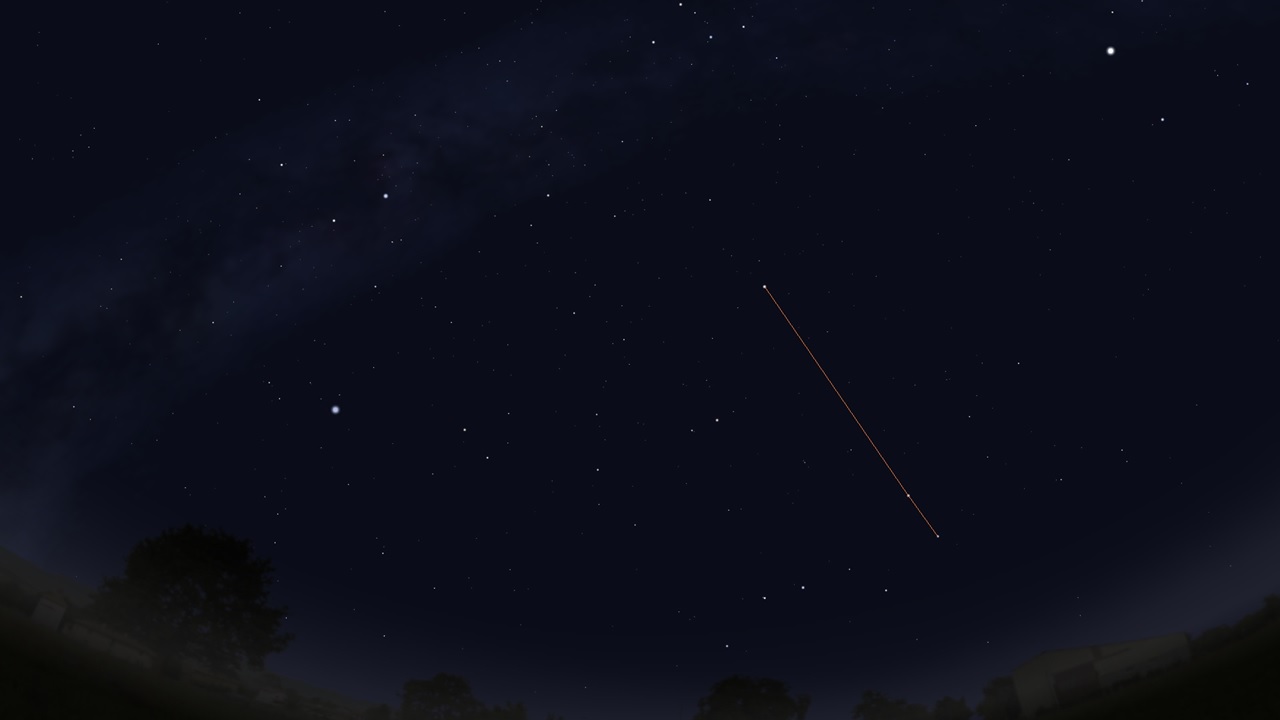At
first, astronomy can seem a little overwhelming, looking up at a clear sky full
of so many stars can be confusing and many people are put off by this. The main
aim of this site is to aid and encourage anyone who wants to
learn more about the night sky.
What
I hope to illustrate with this site is that things are not as
complicated as they first appear. You don’t need a degree in fancy maths or a
PHD in some clever science to look up; all you need is your eyes and the
location of a couple of constellations in the sky.
Anyone
with even a slight interest in astronomy can probably identify one
constellation, or, at least a part of one.
There are three constellations in the image above.
The clever types can spot them straight away, but most people’s eyes are usually drawn to the area. in the circle,
This is The Plough; it is part of the constellation of Ursa Major, The Great Bear. The plough can be used to guide us around the night sky.
The clever types can spot them straight away, but most people’s eyes are usually drawn to the area. in the circle,
This is The Plough; it is part of the constellation of Ursa Major, The Great Bear. The plough can be used to guide us around the night sky.
Using
the 2 stars that make the front of the plough, Merak and Dubhe we draw an
imaginary line between those two stars and continue it for about as wide as you
can stretch your thumb and little finger.
This will guide you to a star called Polaris, also known as The North Star. Polaris is the brightest start in the constellation of Ursa Minor, The Little Bear.
This will guide you to a star called Polaris, also known as The North Star. Polaris is the brightest start in the constellation of Ursa Minor, The Little Bear.
Going
back to the plough and using Merak and Dubhe again, draw an imaginary line to
Polaris, but this time continue it on as shown in the image, the star you come
to is the magnitude 2.25 Caph, in the constellation of Cassiopeia.
So
far we have found three constellations, there are
plenty of products available that can help you find your way around the night
sky, a simple Planisphere can be downloaded from the internet, you can buy a
larger, and sturdier Planisphere such as the Philips version.
If you have a tablet or Smartphone there are a multitude of free and purchasable apps. I thoroughly recommend a product called Stellarium. It's completely free to download to a PC and Mac. It's also available for Android & Ios for a small fee.
If you have a tablet or Smartphone there are a multitude of free and purchasable apps. I thoroughly recommend a product called Stellarium. It's completely free to download to a PC and Mac. It's also available for Android & Ios for a small fee.
Of
course the easiest way to find your way around the night sky would be to attend
an Astronomy Club, there are usually a few people who are very familiar with
the constellations and are always willing to help you find that elusive sight.
The
other daunting thing with Astronomy is equipment; well to start with you
already have the basic equipment with you. As you progress you may want to buy
a pair of binoculars or a telescope. I would recommend starting with a pair of
binoculars of at least 10x50. The good thing about binoculars is that they are
relatively low priced and have a lot more use than a telescope plus they are
considerably more portable. Making a decision about a telescope is a bit more
in depth; I strongly advise having a chat with members of an astronomy society
or a reputable sales person.
There is a section on this site about buying a 'scope or binoculars
There is a section on this site about buying a 'scope or binoculars






No comments:
Post a Comment